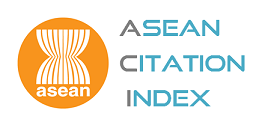Co-management Concept: Practical Variation in Ob Luang National Park
Keywords:
Co-management concept, Land demarcation, Practical variation, National ParkAbstract
This article aims to study and analyze success and failure of co-management application and action in Ob Luang National Park and analyze the factors contributing to the partial failure or variation of co-management from central and regional agencies. The paper used the qualitative research method to collect the data from meeting reports, annual reports, and in-depth interviews of all stakeholders as communities leader groups, National Park officers and NGOs about the concept and thinking systems, management mechanisms, processes and tools. It analyzed using the co-management concept to indicate the success and failure as the variability. The results found that the case study succeeded in the alignment of land demarcation boundary between the conservation and arable areas are acceptable. The success is due to mostly the concept and practice approach, materials, and good relationships with local stakeholders, and a small part from central, regional and provincial supporters. The failures exemplified by lack of legal or semi-legal recognition of land demarcation, insufficient implementation of participatory forest protection at the areas, and lack of supports on promoting sustainable production at the areas designated as arable land use. Therefore, it found that because of the bureaucratic system, the concept and practice are not clear, as well as less support from the central and regional agencies, and respectively as well as the relationship of stakeholders. Moreover, co-management may be logically sound for management in the national park, but it does not take the factors for the variation as significant components that reduce the effectiveness of the concept.
Downloads
Published
How to Cite
Issue
Section
License
The opinions and ideas expressed in all submissions published in Thammasat Review are solely that of the author(s) and do not necessarily reflect that of the editors or the editorial board.
The copyright of all articles including all written content and illustrations belong to Thammasat Review. Any individuals or organisation wishing to publish, reproduce and distribute a particular manuscript must seek permission from the journal first.








